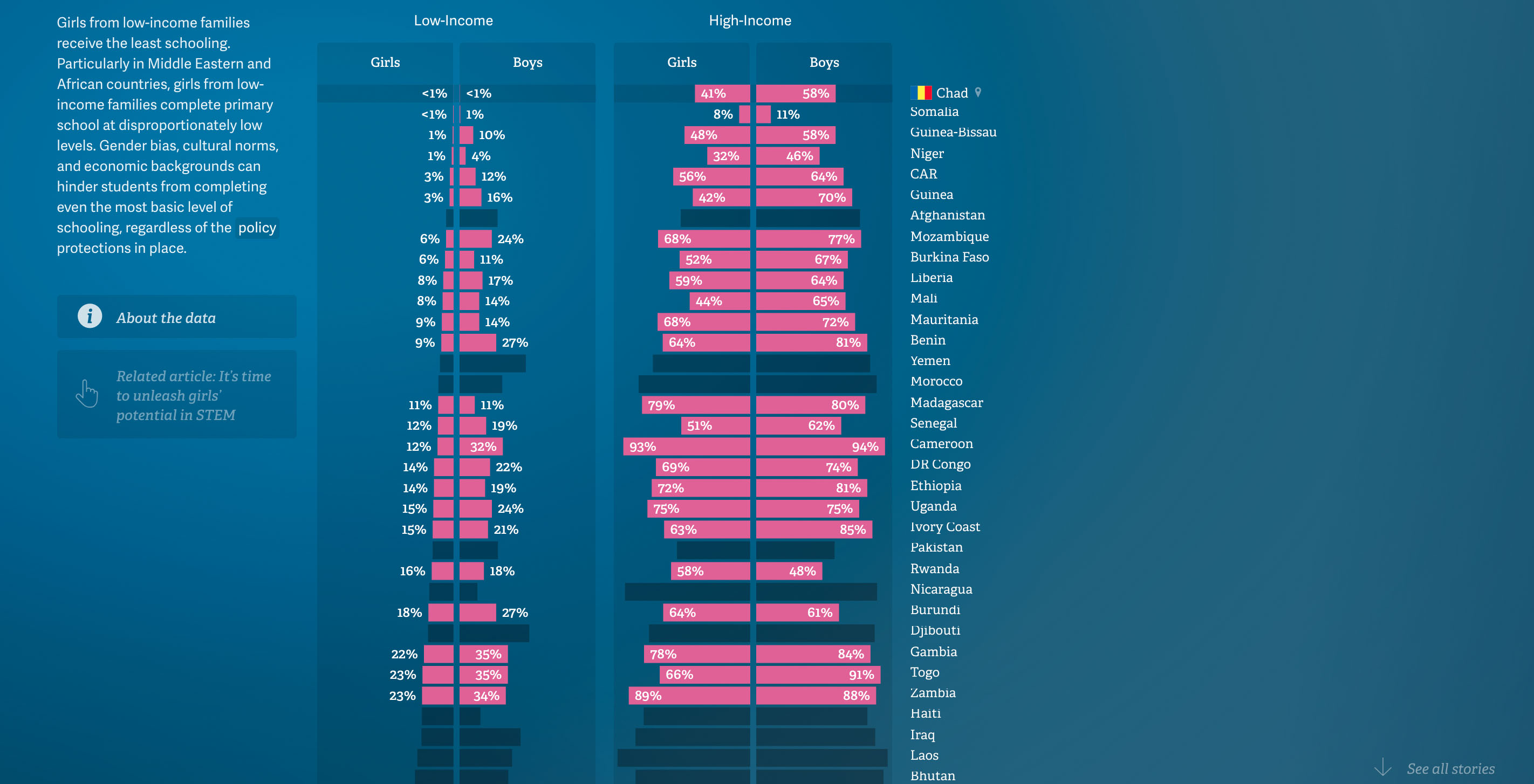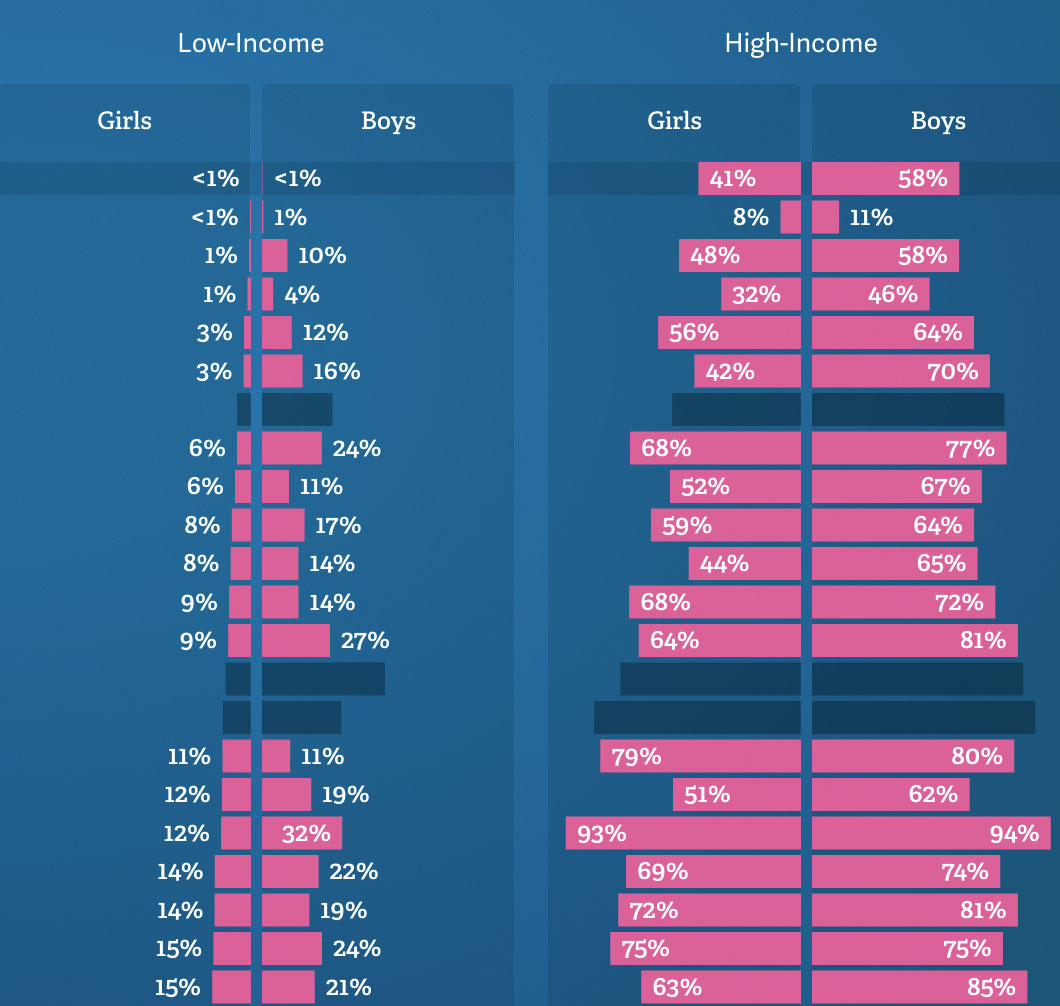

In Yemen, a country with one of the greatest educational disparities between genders and income levels, just one girl for every five boys in the lowest income group finishes primary school. The gap widens when comparing between Yemeni girls: seven girls from the highest income group complete primary school for every one girl at the lowest. The academic outlooks, career goals, and familial health of girls from low-income households will all suffer as a result.
While yes, the disparities in primary school enrollment are closing, many schools experience a large drop-off by the time students enter secondary school. Gender bias and cultural norms, in addition to economic disparities, often hinder students from making the transition, regardless of the policy protections in place.
Take a look and spread the word. We can't change the numbers unless we know them.